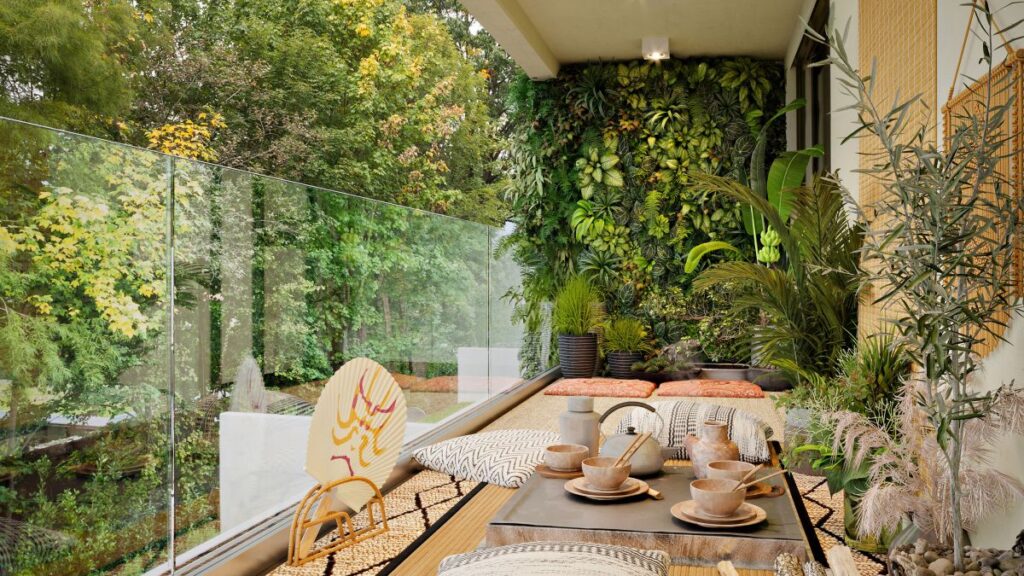Fruit trees and berry bushes in pots
Classic fruit trees such as apple trees, but also citrus plants and berry bushes can also be grown on balconies, terraces and roof gardens. Make sure the pot size is adequate – these permanent crops should have plenty of room for their root ball. The preferred location should be one that is sunny at least part of the day and not too windy. Walls are perfect for placing trees and shrubs in pots in front of them: They protect against wind, store the daily heat of the sun and release it at night.
If a fruit tree is grown in such a way that its shape is adapted to the wall or specific location (kept low, with branches drawn along the wall for easy access), it is called espalier fruit. Note that some fruit varieties are better suited to this growth habit than others. Whether it’s a fruit tree, citrus plants or berry bush, they all need adequate water and nutrients, just like any fruiting plants ! So water your large potted plants reliably and regularly from spring to fall (the same watering instructions apply as for other potted plants).
Watering potted plants properly in winter
Make sure that you water trees and shrubs – just like all other potted plants that stay outside in winter – sufficiently during the cold months! However, you should only do this on relatively warm days (plus degrees!) with room-warm water. Never water potted plants during cold periods and at sub-zero temperatures!
Especially fruiting plants like fruit trees and berry bushes need a lot of nutrients. If they grow in pots, however, they have the fundamental problem of nutrient replenishment. Only if there are sufficient nutrients in the long term will the plants have enough strength to bear a nice harvest. However, the soil, which is very limited in pots, is quickly depleted, and the plants have used up all the nutrients it contains. Fruiting plants in pots are therefore particularly dependent on plants by humans. Remember to provide such plants with new nutrients at least once a year. Especially here, the use of animal manure and other slow-release fertilizers, such as horn shavings, is excellent.
Practical tip: Watering useful plants on the balcony and terrace properly.
A special case are useful plants in pots, troughs and co. Since these have no direct contact with the ground, they are absolutely dependent on human care. Here’s what you should keep in mind when watering potted plants:
Basically, the same applies as in the open ground: rather water less frequently, but extensively – in the sense of long – and penetrating. Especially with potted plants (whether on the terrace or indoors), dividing the watering into two passes is highly recommended!
However, you should only water enough so that the amount of water that collects in the saucer can be absorbed by the plant on the same day. If the roots stand in water for a long time, this will lead to root rot – without roots, the plant can no longer absorb water, it will dry up if the saucer is full.
Depending on the exact location (covered or not) as well as the weather (heat, wind!) Potted plants need to be watered up to daily.
The best time to water – just as with outdoor plants – is as early in the morning as possible.
You can save water continuously by protecting the pots from wind, with an obstacle in the main wind direction (e.g. by mats on the balcony lattice) or a higher planting. Please make sure, however, that the windbreak does not take all the sun away from the plants.
Whether and how often you need to water raised beds depends on whether they have direct contact with the ground or not. Alternatively, or as a supplement, you can also work with various watering aids for vegetable plants in pots.


